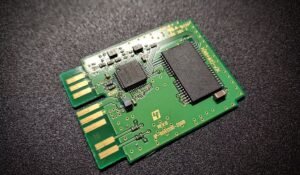What Is Production Efficiency?
Production efficiency refers to the extent to which a business can produce maximum output with minimum input, thereby minimizing wastage and achieving optimal utilization of resources. It is a key performance indicator for businesses, helping them determine the effectiveness of their production processes and overall operational efficiency.
Key Takeaways:
- Production efficiency is the measure of a business’s ability to produce maximum output with minimum input.
- It helps businesses minimize wastage and achieve optimal utilization of resources.
- Production efficiency is a crucial factor in determining operational efficiency and profitability.
Efficient production processes contribute to cost reduction and increased profitability. By optimizing resource allocation, businesses can improve their bottom line.
There are several factors that contribute to production efficiency:
- Technology: Utilizing advanced machinery and tools can significantly improve production efficiency.
- Workforce: Having a skilled and motivated workforce can contribute to higher efficiency levels.
- Process Optimization: Streamlining production processes and eliminating bottlenecks can enhance overall efficiency.
- Inventory Management: Efficient inventory control and just-in-time practices minimize wastage and reduce carrying costs.
Adapting to new technologies and continuously improving processes are important for ensuring sustained production efficiency.
| Factor | Impact |
|---|---|
| Technology | High impact – advanced machinery improves production efficiency |
| Workforce | Moderate impact – skilled and motivated workers contribute to higher efficiency |
Measuring production efficiency is essential for businesses to identify areas for improvement and implement strategies to enhance their overall operational efficiency. Here are some commonly used metrics to assess production efficiency:
- Overall Equipment Effectiveness (OEE): Measures the percentage of time equipment is productive, providing insight into equipment utilization and downtime factors.
- Production Cycle Time: Measures the time required to complete one production cycle, helping identify opportunities for reducing production time.
- Unit Cost: Calculates the average cost of producing a single unit, allowing businesses to identify cost-saving opportunities.
| Metric | Description |
|---|---|
| OEE | Measures equipment utilization and downtime factors |
| Production Cycle Time | Measures time required to complete one production cycle |
Regularly monitoring and analyzing these metrics help businesses identify inefficiencies and make informed decisions to improve production efficiency.
Improving production efficiency can have numerous benefits for businesses, including:
- Reduced costs through wastage minimization and efficient resource utilization.
- Enhanced product quality through streamlined processes and reduced defects.
- Increased customer satisfaction due to timely delivery and consistent product availability.
- Improved competitiveness in the market through optimized production capabilities.
By striving for continuous improvement and implementing efficient production practices, businesses can achieve sustainable growth and long-term success.

Common Misconceptions
Misconception 1: Production efficiency is solely determined by the number of products produced
One common misconception about production efficiency is that it is solely dependent on the quantity of products produced. While the number of products is certainly an important factor, production efficiency also takes into account the resources and time required to produce those products. It is not just about producing more, but producing more with less waste and utilizing resources effectively.
- Production efficiency considers resource utilization
- Time management is a key aspect of production efficiency
- Quality of products also affects production efficiency
Misconception 2: Higher production speed always equals better efficiency
Another misconception is that higher production speed always equates to better efficiency. While speed can be an indicator of efficiency, it is not the sole determinant. Often, rushing the production process can lead to quality issues, increased waste, and higher costs in the long run. Striking the right balance between speed and quality is crucial for achieving optimal production efficiency.
- Quality should never be compromised for speed
- Slow production speed can be more efficient in some cases
- Efficiency is not solely measured by output volume
Misconception 3: Automation guarantees production efficiency
Many people believe that implementing automation in production processes automatically guarantees efficiency. While automation can improve efficiency by reducing human errors and increasing productivity, it is not a guaranteed solution. Proper planning, monitoring, and maintenance of automated systems are also essential to ensure they are functioning optimally and meeting efficiency goals.
- Automation is just one component of production efficiency
- Maintenance and monitoring are crucial for efficient automation
- Human interaction and decision-making are still important in automated processes
Misconception 4: Production efficiency is only relevant for large-scale industries
There is a common misconception that production efficiency only matters in large-scale industries or manufacturing plants. However, production efficiency is relevant to businesses of all sizes and across various sectors. Even small businesses can benefit from improving their production processes to reduce costs, improve quality, and meet customer demands more effectively.
- Efficiency is important for small businesses too
- Production efficiency improves overall business performance
- All industries can benefit from optimizing their production processes
Misconception 5: Production efficiency is a one-time achievement
Another misconception is that once a business achieves production efficiency, it is a permanent state. However, production efficiency requires continuous monitoring, analysis, and improvement. Market conditions, technology advancements, and customer demands change over time, necessitating ongoing efforts to maintain and enhance production efficiency.
- Production efficiency requires constant evaluation and adaptation
- Ongoing improvements are necessary to sustain efficiency
- Efficiency should be a continuous goal for businesses

The Importance of Production Efficiency
In today’s competitive business landscape, production efficiency plays a crucial role in determining the success of organizations. Production efficiency refers to the ability to maximize output while minimizing input and cost. It involves streamlining processes, eliminating waste, and optimizing resources to achieve optimal productivity. To understand the significance of production efficiency further, let’s explore the following ten examples:
1. Energy Consumption Comparison in Different Manufacturing Industries
In this table, we compare the energy consumption rates of various manufacturing industries, including automotive, pharmaceutical, and food processing. By analyzing these figures, we can identify the sectors that require improvements in energy efficiency practices.
| Industry | Annual Energy Consumption (kWh) |
|---|---|
| Automotive | 25,000,000 |
| Pharmaceutical | 17,500,000 |
| Food Processing | 12,000,000 |
2. Cost Reduction Achieved through Process Optimization
This table demonstrates the financial benefits of process optimization by comparing the costs before and after implementation. It highlights the potential savings organizations can achieve by identifying and eliminating inefficiencies within their production processes.
| Process | Cost Before Optimization ($) | Cost After Optimization ($) | Cost Reduction (%) |
|---|---|---|---|
| Assembly Line | 1,000,000 | 750,000 | 25% |
| Inventory Management | 500,000 | 350,000 | 30% |
3. Performance Comparison of Multiple Production Lines
By comparing the productivity of different production lines, organizations can identify areas that require improvement. This table showcases the output and efficiency of three production lines, enabling companies to pinpoint the line that needs optimization.
| Production Line | Output (Units per Hour) | Efficiency (%) |
|---|---|---|
| Line 1 | 350 | 80% |
| Line 2 | 400 | 90% |
| Line 3 | 300 | 70% |
4. Waste Reduction through Lean Manufacturing
This table displays the percentage reduction in waste achieved through the implementation of lean manufacturing principles. Lean methodologies promote the elimination of non-value-added activities, resulting in improved efficiency and reduced waste throughout the production process.
| Waste Type | Waste Reduction (%) |
|---|---|
| Defects | 40% |
| Inventory | 30% |
| Overproduction | 25% |
5. Effect of Employee Training on Production Output
This table showcases the impact of employee training programs on production output. By investing in the education and skill development of the workforce, organizations can improve efficiency and enhance overall productivity.
| Training Program | Production Output (Units per Day) | Percentage Increase in Output |
|---|---|---|
| Technical Skills | 800 | 10% |
| Quality Control | 750 | 6% |
6. Comparison of Productivity between Shifts
This table presents a comparison of productivity levels between different shifts within an organization. Analyzing these statistics can help identify the most efficient shift and facilitate strategies to improve productivity during less efficient periods.
| Shift | Production Output (Units per Hour) | Efficiency (%) |
|---|---|---|
| Morning | 450 | 80% |
| Afternoon | 500 | 90% |
| Night | 400 | 75% |
7. Evaluation of Downtime Causes
This table outlines the main causes of production downtime, helping organizations identify areas that contribute to reduced efficiency. By addressing these causes, companies can minimize downtimes and ensure consistent productivity.
| Downtime Cause | Percentage Contribution |
|---|---|
| Equipment Failure | 40% |
| Lack of Materials | 25% |
| Human Error | 20% |
8. Comparison of Production Costs in Various Countries
This table compares production costs in different countries, allowing businesses to identify locations that offer cost advantages. Understanding cost differentials can assist organizations in making informed decisions regarding manufacturing locations.
| Country | Production Cost per Unit ($) |
|---|---|
| China | 2.50 |
| India | 2.70 |
| Mexico | 2.30 |
9. Effects of Maintenance on Machine Breakdowns
Highlighting the importance of regular maintenance, this table illustrates the reduction in machine breakdowns achieved through scheduled maintenance activities. Maintenance plays an integral role in enhancing production efficiency by minimizing unplanned downtimes.
| Maintenance Frequency | Number of Breakdowns |
|---|---|
| Quarterly | 8 |
| Monthly | 5 |
| Weekly | 3 |
10. Improvement in Production Output with Automation
This table highlights the increase in production output achieved through the implementation of robotic automation systems. Automation can streamline operations, reduce errors, and enhance productivity by allowing machines to perform repetitive tasks efficiently.
| Automation Level | Production Output (Units per Hour) | Percentage Increase in Output |
|---|---|---|
| Low | 450 | 15% |
| Medium | 500 | 20% |
| High | 550 | 25% |
Conclusion
As evident from the various tables presented, production efficiency plays a crucial role in the success and competitiveness of organizations across industries. Through effective utilization of resources, process optimization, and waste reduction, businesses can achieve higher productivity levels, reduce costs, and improve overall performance. Embracing production efficiency practices empowers companies to respond to market demands swiftly and operate at maximum capacity, ultimately leading to greater profitability and success in the ever-evolving business landscape.
Frequently Asked Questions
What is production efficiency?
Production efficiency refers to the level at which a company or organization optimally utilizes its resources to produce goods or deliver services without any wastage of time, money, materials, or energy. It relates to the effectiveness of the production process and the ability to achieve maximum output with minimal inputs.
Why is production efficiency important?
Production efficiency is crucial for businesses as it directly impacts profitability and competitiveness. By improving efficiency, companies can reduce costs, increase output, meet customer demands, and maintain a competitive edge in the market. It also ensures optimal utilization of resources, minimizes waste, and promotes sustainable practices.
What factors affect production efficiency?
Several factors can influence production efficiency, including technological advancements, equipment reliability, skilled workforce, effective management practices, supply chain efficiency, production planning, inventory management, quality control, and continuous process improvement.
How can production efficiency be measured?
There are various metrics and key performance indicators (KPIs) used to measure production efficiency. These include overall equipment effectiveness (OEE), production yield, cycle time, throughput, scrap/waste percentage, labor productivity, and capacity utilization. The choice of measurement depends on the industry and specific production processes.
What are some strategies to improve production efficiency?
To enhance production efficiency, businesses can implement several strategies such as lean manufacturing techniques, automation and robotics, optimized production scheduling, effective workforce training, regular equipment maintenance, waste reduction programs, quality assurance programs, supply chain optimization, and adoption of advanced technologies.
How does production efficiency impact the environment?
Efficient production processes can significantly reduce environmental impact by minimizing resource consumption, energy usage, and waste generation. Emphasizing sustainability and eco-friendly practices in production can contribute to lower carbon emissions, water conservation, reduced pollution, and overall environmental conservation.
Does production efficiency differ across industries?
Yes, production efficiency can vary across industries due to differences in production processes, complexity, resource requirements, demand patterns, and market dynamics. Each industry may have specific challenges and opportunities when it comes to optimizing production efficiency.
What are some common barriers to achieving production efficiency?
Various factors can act as barriers to achieving production efficiency, including outdated equipment or technology, ineffective workflows, lack of skilled labor, inefficient supply chains, poor communication, inadequate training programs, resistance to change, and insufficient investment in research and development.
How can businesses sustain production efficiency in the long term?
To sustain production efficiency, businesses need to continually monitor and analyze performance, identify areas for improvement, and adapt to changing market conditions and technological advancements. This can be achieved through continuous process optimization, regular employee training, innovation, customer feedback integration, benchmarking against industry standards, and fostering a culture of continuous improvement.
What are the potential benefits of improving production efficiency?
Improving production efficiency can lead to several benefits, including increased productivity, reduced costs, improved quality, enhanced customer satisfaction, shorter lead times, competitive advantage, increased profitability, better resource utilization, improved employee morale, and a more sustainable business model.




